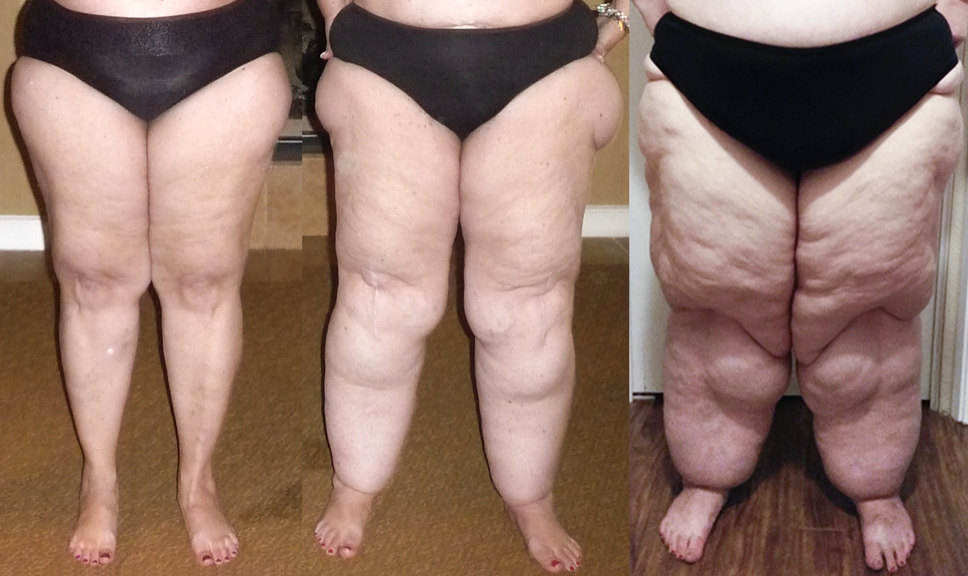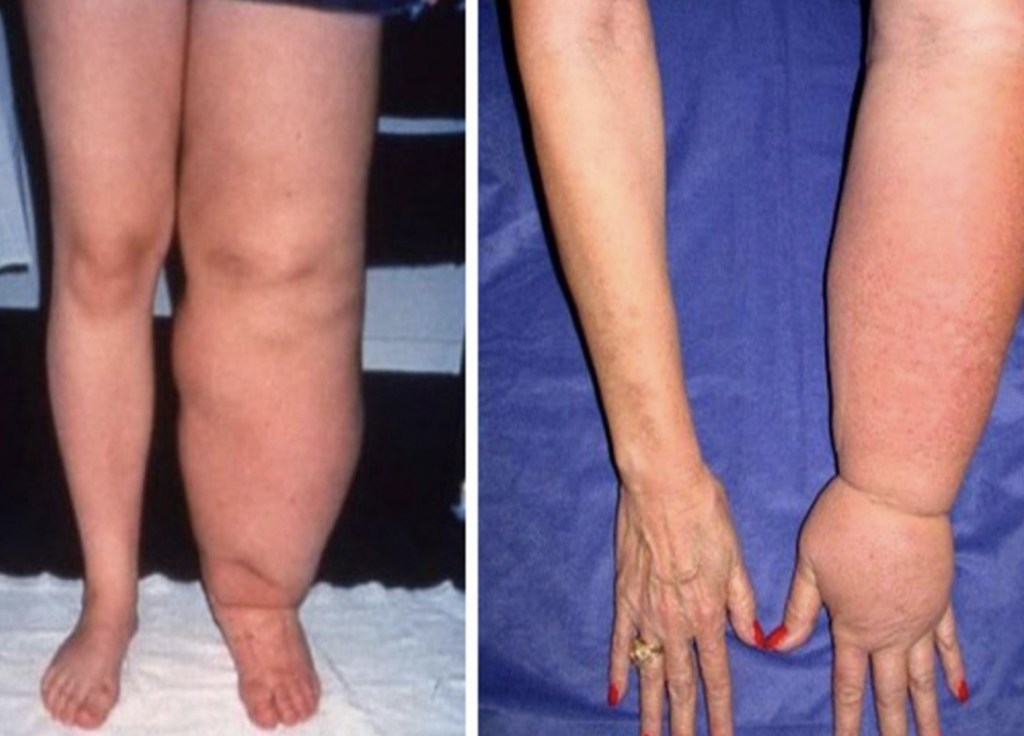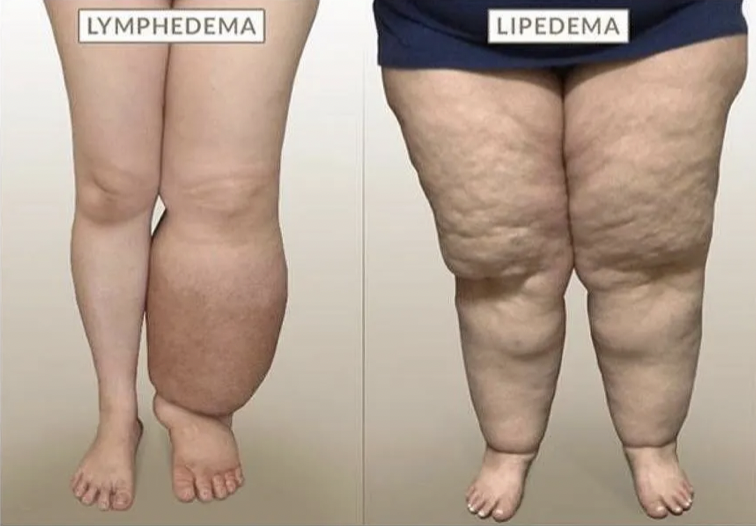Lipedema and Lymphedema are two very different medical conditions, but they often get confused for one another – even by doctors. Both cause swelling, often in the legs, and can dramatically impact day to day life. Understanding the difference between Lipedema vs Lymphedema is crucial when getting an official Lipedema diagnosis and treatment.
I remember the confusion I felt when I first started researching my Lipedema symptoms – Google seemed to use the two conditions interchangeably, and my GP mentioned Lymphedema when I visited the doctors with painful, swollen legs. So let’s demystify the confusion and break it down properly.
What is Lipedema?
Lipedema is a chronic fat disorder that typically affects women. It causes a symmetrical buildup of fat, most often in the legs, hips, calves and sometimes Lipedema presents itself in the upper arms. Unlike general weight gain, Lipedema fat is painful, resistant to diet and exercise, and can feel nodular or spongey under the skin.
Common symptoms of Lipedema:
- Lipedema pain and heavy legs
- Easy Lipedema bruising
- Swelling that worsens throughout the day
- Disproportion between upper and lower body
- Lipedema fat doesn’t respond to diet or exercise
Lipedema is often triggered or worsened during hormonal shifts, like puberty, pregnancy, or menopause.
What is Lymphedema?
Lymphedema is a swelling disorder caused by a blockage or malfunction in the lymphatic system. It can be primary (from birth/genetics) or secondary (caused by surgery, radiation, or injury). Unlike Lipedema, it’s not related to fat distribution – it’s all about fluid build-up.
Common symptoms of Lymphedema:
- Swelling in one or both limbs (often asymmetrical)
- Skin tightness or thickening
- Discomfort or aching
- Increased risk of infections like cellulitis
- Positive Stemmer’s Sign (more on this below)
Key Differences Between Lipedema and Lymphedema
|
Features |
Lipedema |
Lymphedema |
|
Affected Area |
Legs/arms (symmetrical) |
Usually one limb or one side of body |
|
Cause |
Hormonal, genetic fat disorder |
Lymphatic system damage/blockage |
|
Pain |
Yes – often painful fat |
Usually not painful, more discomfort |
|
Skin |
Soft, bruises easily |
Can become thickened/hardened |
|
Swelling |
Increases through day, no foot swelling |
May involve foot/hand swelling |
|
Diet/Exercise Response |
Poor |
Can help reduce inflammation slightly |
|
Stemmer’s Sign |
Negative (can pinch skin on toe) |
Positive (can’t pinch toe skin) |
Can You Have Both Lipedema and Lymphedema?
Unfortunately, yes – and many people do. This combination is often called Lipo-Lymphedema, where long-term Lipedema causes lymphatic overload, leading to secondary Lymphedema. It’s also known as stage 4 Lipedema.
If you have painful fat deposits plus swelling in the feet, you may have both conditions and need a diagnosis from a Lymphedema specialist. They should be well versed in the complexities both conditions and will be able to make an accurate diagnosis based on your symptoms.
How Are They Diagnosed?
There’s no single test for either condition, which is why proper diagnosis can take time.
Lipedema is diagnosed by:
- Clinical examination
- Medical history
- Body fat distribution
- Symptom tracking (pain, bruising, heaviness)
- Lipedema pinch test
Lymphedema is diagnosed by:
- Measuring limb volume/swelling
- Imaging tests (like Lymphoscintigraphy or Doppler)
- Checking for Stemmer’s Sign
- Looking for signs of fluid retention
Why It Matters
Getting the right diagnosis changes everything. Misdiagnosed Lipedema is often treated as general Obesity, while untreated Lymphedema can lead to infection, skin breakdown, and worsening swelling.
Treatments differ too:
- Lipedema is managed with compression, gentle exercise for Lipedema, MLD, and (sometimes) Lipedema Reduction Surgery
- Lymphedema is treated with compression, MLD, skincare, and lymphatic support
If you’re unsure, speak to a Lymphedema nurse or vascular specialist – and bring photos or notes of your symptoms. Even though I only suffer from Lipedema, it was a Lymphedema nurse that officially diagnosed me with stage 2 Lipedema in 2022.
Find a Specialist Who Gets It
If you’re struggling to get answers like so many of us, check out our Find a Lipedema Specialist directory. We list professionals from around the world who are experienced in diagnosing Lipedema, Lymphedema, or both. Whether you’re in the UK, US, or beyond – you’re not alone, and the right support and resources are out there.
Lipedema vs Lymphedema – Know the Signs
Although Lipedema and Lymphedema share some obvious similarities, they’re completely different conditions that require unique approaches. Understanding what sets them apart can help you get the correct diagnosis, avoid frustration, and take back control of your health journey.
When I got my Lipedema diagnosis in 2022, I found the biggest hurdle to overcome was convincing my doctor that I didn’t have Lymphedema. Lymphedema is more recognised as a medical condition than Lipedema (especially in the UK), so it can be an uphill battle trying to get through to medical staff.
If you’re still unsure what you’re dealing with – trust your instincts, do your research, and don’t stop until you get the answers you deserve. It’s all about persistence. Has your Lipedema ever been misdiagnosed as Lymphedema? Send me an email at so****@***********me.com and let me know.
Disclaimer: My blogs talk about Lipedema, diet, surgery and much more. I’m talking from my point of view to help women, and remind them they are not alone. I am not a medical professional, so the content above is from my own perspective with research I have done into the topic. It’s not meant as medical advice, you should always consult your doctor or a specialist for both your diagnosis, and a treatment plan.



